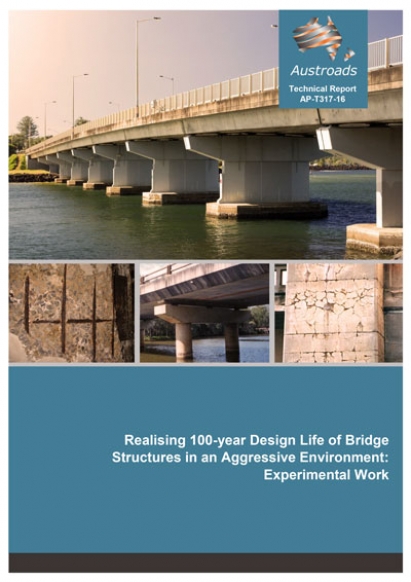Wednesday, 23 November 2016
Austroads has published the results of a four year project investigating durability issues that affect the service life of reinforced concrete bridges located on the coast or in saline soils.

Reinforced concrete bridges in these aggressive environments are designed for a 100-year service life, but they start to deteriorate after only 30 years.
Bridge elements such as piles, pile caps and columns, are very expensive and sometimes impractical to replace once they suffer major deterioration. Therefore, ensuring their long-term durability beyond 100 years is crucial.
The project is detailed in two reports; an extensive literature review and the results of experimental work.
The literature review suggests that realising a service life of beyond 100 years in an aggressive environment can be achieved by:
- increasing concrete cover thickness
- using appropriate protective surface coatings
- isolating concrete from the aggressive environment by appropriate encasement
- installing cathodic protection or cathodic prevention
- using corrosion resistant materials, such as appropriate varieties of stainless steel
- using high performance concrete mixes
- neutralising acidic soils
- carefully supervising all aspects of the design and construction phases.
The research found gaps in the available knowledge including:
- uncertainties in terms of accuracy of the carbonation rate and chloride diffusion coefficient of concrete, which need to be addressed through further research
- uncertainties in models for the prediction of time to the appearance of detectable damage and time of failure
- the long-term tolerance of stainless steel reinforcing materials to high chloride contents in concrete, particularly that of new low-Ni varieties, which is not well-established and requires further research.
Appropriate concrete ingredients and steel reinforcement materials and concrete mix designs, as well as testing parameters, were selected for experimental work to address the concerns mentioned above.
The experimental work comprised investigations into concrete deterioration mechanisms and their mitigation, including corrosion of steel reinforcement as influenced by chloride diffusion into concrete, carbonation of concrete, corrosion resistance of stainless steel, alkali-aggregate reaction and sulfate resistance of concrete.
The research indicates that the long‑term deterioration of concrete ingredients can be avoided and appropriate grades of stainless steel provide very high resistance to chloride‑induced corrosion under highly aggressive conditions. Careful selection of materials and appropriate levels of supervision and workmanship in the manufacture of concrete elements and on-site practices could achieve a 100-year design life for bridges in aggressive environments.
Report links:
Realising 100-year Bridge Design Life in an Aggressive Environment: Review of the Literature
Realising 100-year Design Life of Bridge Structures in an Aggressive Environment: Experimental Work
